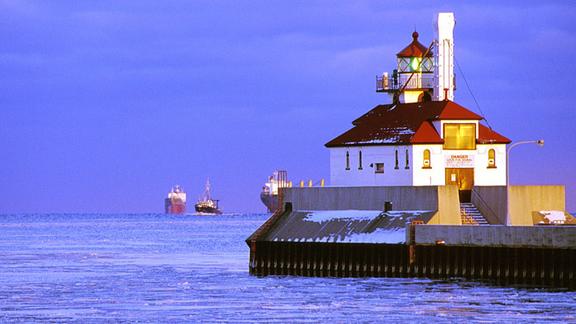Why is Minnesota Sea Grant involved?
World's third-largest economy. If the binational Great Lakes - St. Lawrence region was a country, it would represent the third largest economy in the world; behind the United States and China (Martin and Associates, July 2018). In 2017, the Great Lakes - St. Lawrence Seaway supported $45.6 billion in economic activity (Martin and Associates, July 2018).
Largest tonnage port on the Great Lakes. The Port of Duluth-Superior is the largest tonnage port on the Great Lakes and ranks among the top 20 in the United States. In 2021, the Port of Duluth-Superior handled nearly 33 million short tons (66,000,000,000 tons) of cargo and received more than 700 vessel visits (Duluth Seaway Port Authority, 2022). In 2017, nearly 8,000 jobs in Minnesota and Wisconsin were supported by cargo moving through the Port of Duluth-Superior (Martin and Associates, July 2018).
Infrastructure. The Great Lakes - St. Lawrence Seaway transportation system is aging. Maintenance dredging of navigational channels, placement and beneficial uses of dredge material, ice breaking, ballast water management, fluctuating lake levels, and underuse are challenges facing the Great Lakes maritime transportation system and the Twin Ports of Duluth, Minnesota and Superior, Wisconsin.
Workforce. The workforce of the Great Lakes - St. Lawrence Seaway maritime transportation is also aging and the industry struggles to attract new talent (Great Lakes St. Lawrence Governors and Premiers, 2019).
Lack of public awareness. There is a documented lack of public awareness about the foundational economic role that the Great Lakes maritime transportation system and the Port of Duluth-Superior plays in the region (Chadde, 2012; Haazen, 2012).

A curated selection of resources about the Great Lakes maritime transportation system and the Port of Duluth-Superior.

Maritime hazmat transportation in the Great Lakes.